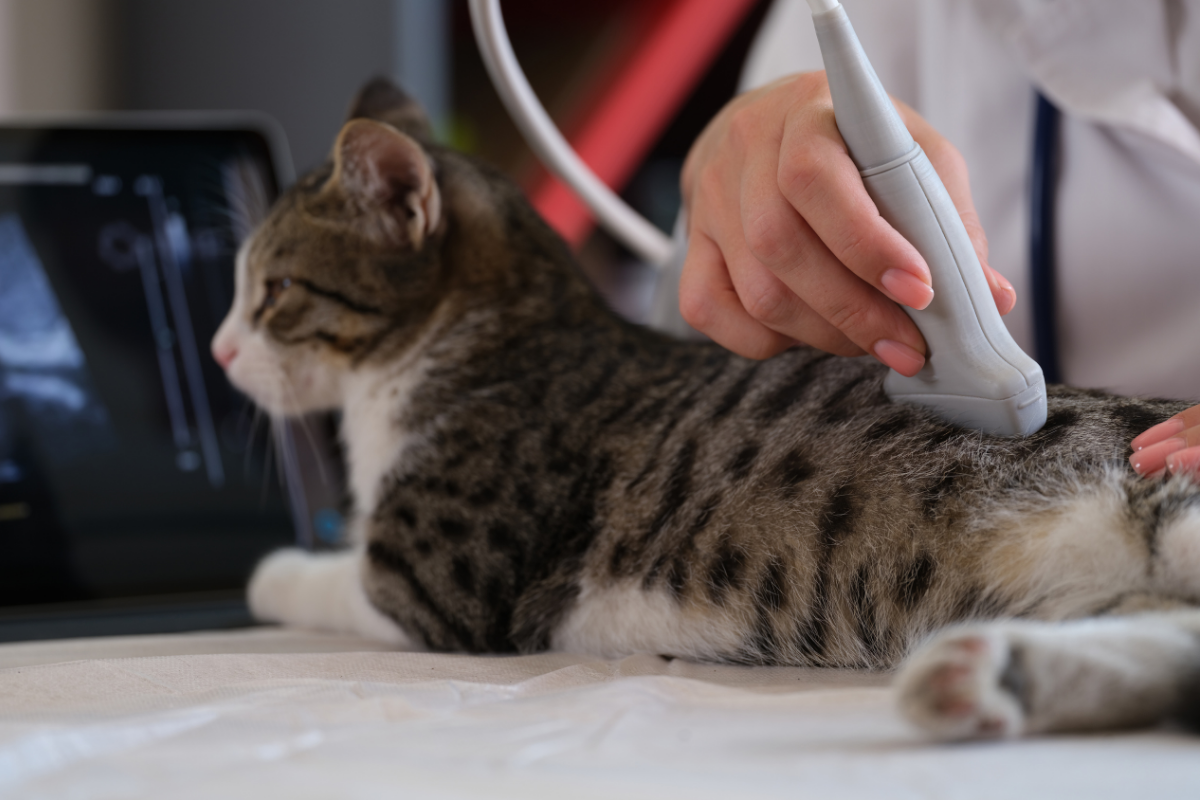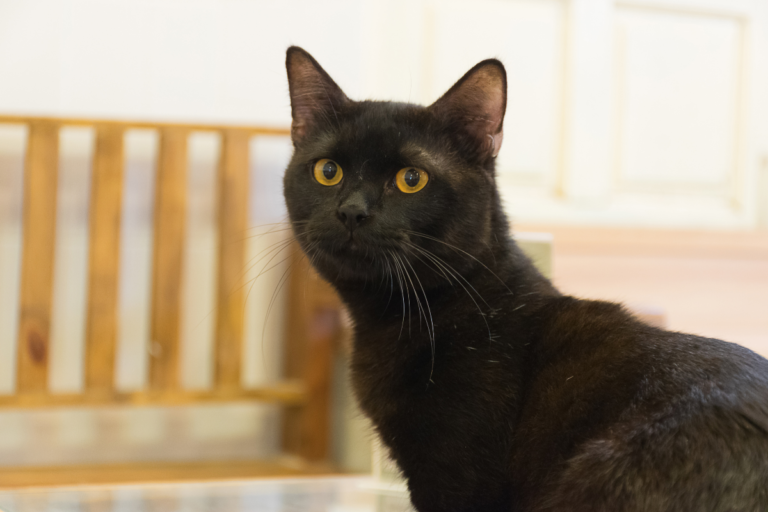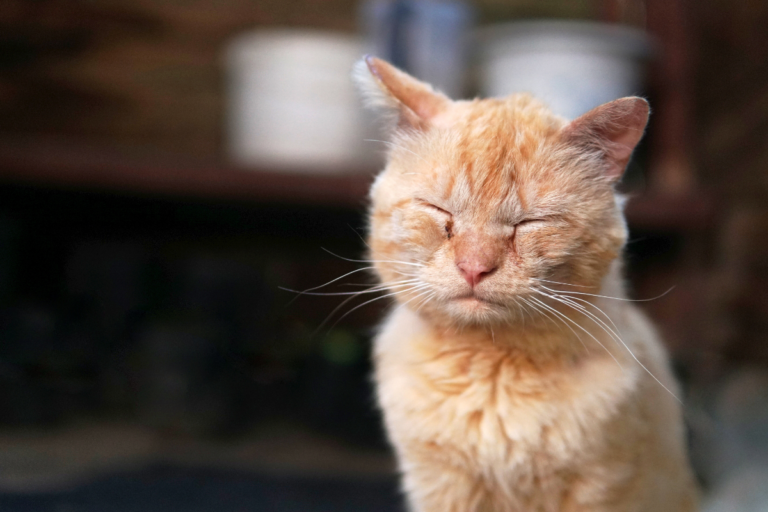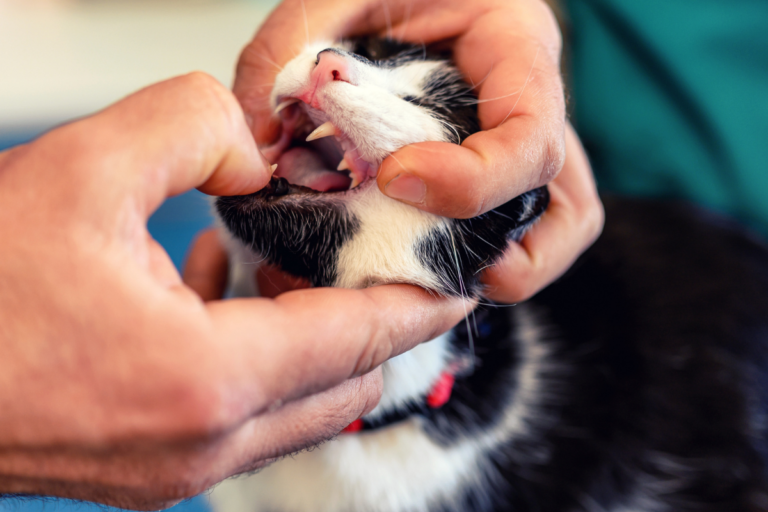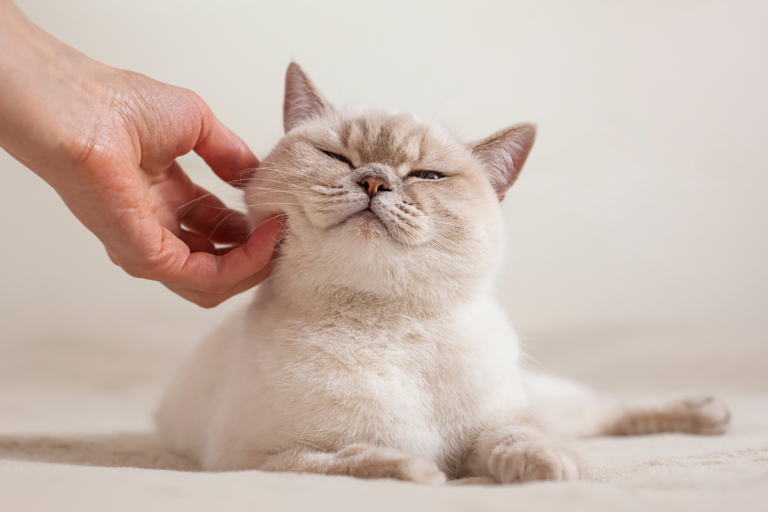Join Our Journey: Spotting Feline Kidney Disease Symptoms
Understanding Feline Kidney Health
Early Signs of Kidney Disease
Spotting kidney issues in our feline buddies before they flare up is a big deal. Sometimes, our whiskered pals might seem perfectly fine during a vet visit, but still, sneakily harbor kidney problems. Here are a few red flags that might hint something’s up with the kidneys:
- Tossing their cookies (vomiting) now and then
- Running to the litter box more often or chugging water like it’s going out of style
- Acting like the couch is their new best friend (lethargy)
- Looking like they’d rather nap than run (dehydration)
- Shopping in the “lightweight” section for collars (weight loss)
- Snubbing their food (lowered appetite)
Keeping an eye on these clues could make a big difference. Our friends over at Today’s Veterinary Nurse say these signs can vary, so we should always keep our feline pals in check.
| Symptom | Common in Early Stages |
|---|---|
| Vomiting | On and Off or Sudden Fireworks |
| Polyuria/Polydipsia | Happens a lot |
| Lethargy | Usually Chills |
| Dehydration | Regular Occurrence |
| Weight Loss | Often Visible |
| Lower Appetite | Frequently Noticed |
Diagnosis and Staging
Figuring out what stage our cats are at involves some detective work with both the eyes and the lab reports. Here’s how we can roll with these important steps:
Clinical Examination
The vet will check for dehydration, any weight drop, and whether the kidneys feel off during a routine feel-around.
Laboratory Tests
Lab tests are our gadgets for confirming kidney issues. The usual suspects include:
- Blood Tests: Checking the levels of blood urea nitrogen (BUN) and creatinine gives us a peek into how the kidneys are holding up.
- Urinalysis: Looking at how diluted or loaded the urine is, and if there are any unwelcome guests like protein or blood.
Our furry elders, according to VCA Hospitals, are more vulnerable. About 30-40% of those over the fabulous age of ten show symptoms, and for every cat over 15, a whopping 81% might be affected. Knowing these stats helps in keeping those check-ups regular and diagnoses timely.
| Test Type | What It Helps With |
|---|---|
| Blood Tests | Checks BUN and creatinine numbers |
| Urinalysis | Observes urine strength and bits and pieces |
Getting the hang of these tests and early warning signs can be a game changer for tackling kitty kidney troubles. Want more tips on keeping them hydrated? Swing by our section on hydration for kidney disease.
Managing Feline Kidney Disease
Dealing with a kitty diagnosed with kidney disease ain’t a walk in the park, but there’s a bunch of things we can do to manage it. We’ll dig into keeping your cat hydrated, why protein matters, and how to keep phosphate levels in check.
Strategies to Encourage Hydration
Getting enough water is super important for cats with kidney issues to keep dehydration at bay. A thirsty kitty can worsen those kidney troubles, so making sure they get enough fluids is a big deal. Here’s how we can help:
- Feeding Canned Diets High in Moisture: Canned food is packed with moisture, around 70-80%, which makes it a great way to help keep your cat hydrated.
- Adding Water to Existing Diets: If dry food is preferred, just add a splash of water or a bit of low-sodium broth to bump up the fluid intake.
- Using Circulating Water Fountains: Cats love running water, so a fountain might tempt them to drink more often.
Importance of Protein Restriction
When it comes to protein, it’s a balancing act. Cats are natural carnivores, needing protein, but too much can cause trouble for their kidneys.
- High-Quality, Moderately Restricted Protein Diet: Providing a diet that’s rich in high-quality but limited protein can help manage kidney disease symptoms, especially in advanced stages or when symptoms are visible (Today’s Veterinary Nurse).
Here’s a quick guide for protein intake:
| IRIS Stage | Recommended Protein Intake |
|---|---|
| I & II | Normal protein levels |
| III & IV | High-quality, moderately restricted |
Managing Phosphate Retention
Phosphate retention can sneak up on cats with kidney disease because their kidneys struggle to filter it out. This might lead to other issues down the line.
- Decreasing Dietary Phosphorus: Keep an eye on phosphorus levels in their food. Opt for kidney-friendly eats that don’t have too much phosphorus.
- Use of Intestinal Phosphate Binders: Sometimes, the vet might suggest phosphate binders to help keep phosphorus levels in check (Today’s Veterinary Nurse).
Here’s the rundown:
- Regular Monitoring: Schedule those vet visits to keep tabs on kidney function and diet.
- Specialized Diets and Supplements: Look into food and supplements focused on kidney health.
Managing feline kidney disease means keeping an eye on hydration, tweaking diets, and consistent vet check-ins. Doing this allows our lovable companions to stay comfy and enjoy their lives a bit longer. For more on cat health, check out info on cat liver problems and cat diabetes.
By getting into the nitty-gritty of kidney issues and using the right strategies, we’re set to support our furry partners through their health woes.
Treatment Options for Kidney Disease
Tackling kidney disease in our feline buddies means diving into a mix of strategies that manage the symptoms and try to slow down the march of the disease. We’ll chat about what your cat chomps on, meds and add-ons, and some fancy treatment tricks that could help down the line.
Dietary Adjustments
When it comes to diet, what goes into your cat’s bowl could make a big difference in their kidney health. A cat-friendly, kidney-conscious diet can really help.
Hydration Tips
Water’s a big deal for cats with kidney woes—think of it as the magic juice they need to avoid drying up into fur-covered raisins. You can keep the water flowing by:
- Serving canned food that’s swimming in moisture
- Mixing extra water into their regular meals
- Setting up a cat-friendly water fountain for some splashy fun
These tricks can make sure our little fur balls stay juicy and hydrated if they’re dealing with kidney issues.
Protein Moderation
Feeding time should feature high-quality protein, but in moderation. This is extra crucial if your cat’s kidney issues are advanced. Tweaking the protein levels in their diet can help reduce levels that sound scary, like that thing called azotemia.
Phosphorus Police
Cats with kidney problems often hang on to too much phosphorus, which brings a bunch of other problems with it. The goal? Lower phosphorus in their diet and maybe throw in some special binders to help keep things balanced.
| Nutritional Adjustment | Its Job |
|---|---|
| Moisture-Rich Diet | Keeps them from drying out |
| Moderate Protein | Helps handle azotemia |
| Low Phosphorus | Tackles excess phosphorus |
Medications and Supplements
Pills and potions also play a part in helping our feline friends handle kidney disease.
Phosphate Binders
These guys help keep phosphorus levels from going through the roof, sidestepping potential issues from too much phosphorus.
Blood Pressure Helpers
Cats with kidney problems often have a blood pressure that’s flying too high. Meds like ACE inhibitors can bring it back down to earth, easing the pressure on their kidneys.
Vitamin D and Omega-3s
Loaded with goodness, vitamin D and omega-3s can support kitty health and help tame inflammation in their little bodies.
Advanced Treatment Techniques
Sometimes, you gotta bring out the big guns to help cats with extra-tough kidney problems.
Renal Swap
Kidney transplants might sound wild, but they’ve been known to give cats a new lease on life by swapping their damaged kidney with one that’s in good shape.
CRRT Wizardry
Think of Continuous Renal Replacement Therapy like a cleaning service for blood—taking out the bad stuff and sorting out the electrolytes before sending it back to your cat’s body.
Caring for Cats in Tough Times
When kidney problems reach the end of the road, what matters most is keeping our cats comfy and loved—good food, plenty of water, warmth, and of course, all the cuddles they can handle.
If you’re curious for more tips on keeping your feline sidekick happy and healthy, check out our reads on cat disease, cat liver problems, and cat diabetes.
By getting to grips with these treatment plans, we can strive to make our cats’ lives better, even when they’re dealing with tough kidney conditions.
Symptoms of Kidney Failure in Cats
Clinical Signs in Early Stage
At the start of kidney problems in cats, things might seem all fine and dandy—until they’re not. We really gotta be on our toes, watching for any little quirks or health hiccups in our feline buddies. According to PetMD, here’s some stuff that might pop up and can slip under the radar:
- Drinking like a fish (okay, not literally, but you get the idea).
- Making more pit stops at the litter box.
- Acting like a couch potato.
- Giving the food bowl the cold shoulder.
- Slimming down without hitting the gym.
The kidneys start slacking off when it comes to garbage duty in the body, leaving trash behind. Regular vet visits are key—catch these issues early, and we might keep things from going downhill. For tips on keeping an eye on a cat’s beltline, check out our piece on senior cat weight loss.
Recognizing End-Stage Symptoms
When kidney trouble hits full steam, the warning lights become impossible to ignore. Knowing what’s coming around the bend helps us be ready, choosing paths that offer treatment or comfort. Advanced symptoms pointed out by VCA Hospitals might look like this:
| Symptom | Description |
|---|---|
| Random Puking | It happens more ‘cause the body’s got a garbage overflow. |
| Parched Cat | No matter how much water they guzzle. |
| Achy Mouth | Ouch, ulcers from the buildup of bad stuff. |
| The Breath of Horror | Thanks to those nasty uremic toxins. |
| Going Twiggy | Serious weight loss with muscles disappearing. |
| Pees and Oopsies | Trouble urinating, nonstop urinating, or uh-oh moments. |
| Ache in the Back | Ouch, in the lower back area. |
| All Wobbly | Weak with a chance of jelly legs. |
| Can’t See Clearly | High blood pressure might mess with vision. |
Noticing these hair-raising signs means it’s time for a vet visit pronto. To learn more about easing into advanced kidney situations, check out our section on end-of-life considerations.
Let’s not forget—keeping the kitty hydrated is top priority. For tricks on making sure the water bowl’s getting some love, see our managing feline kidney disease section. Want more nifty ideas to tackle cat sickness? Hop over to our cat disease and cat illness guides.
Care and Support for Cats with Kidney Disease
Catching It Early
Spotting the signs of kidney problems in cats early can really make a difference. A lot of older cats face this issue, especially the ones getting on in years. For our furry pals over the age of 10 years, about 30-40% experience kidney troubles, and for those past 15 years, the numbers go up to an eye-popping 81% (VCA Hospitals). Keep an eye out for more drinks from the water bowl, more frequent litter box trips, and a bit of a slump in energy. Regular vet check-ups with the occasional blood test can help spot these problems early, which means your buddy gets the help they need quicker.
Keeping Them Happy and Strong
Treating kidney disease in cats ain’t a one-size-fits-all deal. It’s about keeping them around for as long as possible, comfortably. We can’t cure the disease, but with early action and the right treatment, we can make old Fluffy’s life longer and happier (LakeCross Veterinary Hospital). This might involve fluids, vitamins, meds for upset tummies, and some potassium boosters. Regular vet visits are crucial to keep things on track and tweak their care as needed (Best Friends).
Navigating the Hard Times
When kidney disease moves into tough territory, our main focus shifts to keeping our cats comfy. At this stage, some extra challenges pop up like high blood pressure and other not-so-fun symptoms (Best Friends). Staying in touch with the vet will help manage these issues and keep your pet’s spirits high. This might mean managing pain, upping the appetite with stimulants, or handling nausea and vomiting with meds.
Making decisions about the end of our pet’s life isn’t easy, but having that talk can lead to better moments for both you and your kitty. Your vet can guide you through this emotional journey, ensuring your pet’s last days are as dignified and comfortable as possible.
| Age Group | Percentage Affected by Kidney Disease |
|---|---|
| Cats over 10 years | 30-40% |
| Cats over 15 years | 81% |
| Cats under 3 years | 10% |
Staying in tune with your cat’s needs and keeping up with regular veterinary care is key to fighting kidney problems. By working closely with the vet and promptly addressing any hitches in your kitty’s health, you’re set to make their life as pleasant as possible. For more information on handling different cat health issues, check out our other resources like cat disease, cat liver problems symptoms, and cat gum disease.
Preventative Care for Feline Kidney Health
Taking care of our kitties’ kidneys isn’t rocket science—it’s more about being vigilant and making smart choices. By being cautious with toxins, tweaking their grub, and staying on top of regular vet visits, we can nip kidney issues in the bud and keep our cats purring and healthy.
Recognizing Toxins
Keeping our whiskered pals away from home hazards is crucial. Trust us, some everyday items can spell disaster for cat kidneys. Here’s the lowdown on the no-no list:
| Toxin | Common Culprits |
|---|---|
| Ethylene Glycol | Antifreeze (not just for cars, eh?) |
| Lily Flowers | Beautiful but deadly types of lilies |
| Cholecalciferol (Vitamin D) | Lurking in rodent poison and supplements that ain’t meant for them |
These nasties can pump up calcium and phosphorus levels through the roof, wrecking havoc on those tiny kidneys (Best Friends). Keep them far from kitty reach, and you’ll be doing your feline a solid.
Specialized Diets and Supplements
Feeding our cats isn’t just about keeping the belly full—it’s about kidney TLC, too. Here’s a quick breakdown:
| Tweak the Diet | The Good Stuff |
|---|---|
| Low Protein | Cuts down on pesky waste products |
| Low Phosphorus | Keeps additional kidney strife at bay |
| Essential Fatty Acids | Overall health booster |
Mixing in the right supplements and phosphorus-binders with chow could mean smoother kidney sailing (Best Friends). A chinwag with the vet can help us suss out the best eats and pills for our kitty comrades.
If you’re wondering about keeping your cat’s body mass in check, head to our healthy cat weight guide.
Follow-Up Care and Monitoring
Regular vet check-ins are a must – think early alerts and steady management of them kidney gremlins. Cats with kidney shenanigans might run into other troubles like high blood pressure or leaky protein. Keeping tabs is key for a feline’s quality of life.
Here’s how to stay on top:
- Blood Tests on the Reg: Eye on kidney function and electrolytes.
- Blood Pressure Checks: Hypertension has nowhere to hide.
- Urine Analysis: Spot those oddities quick and clear.
For those cats in real trouble, options like transplants and high-tech kidney therapies are possible (Best Friends). These solutions throw a lifeline to strained kidneys.
Peep our library on cat liver problems, cat heart issues, or cat dental disease for a treasure trove of tips. With them, we can offer our furry pals the best shot at a long, tail-wagging life.
